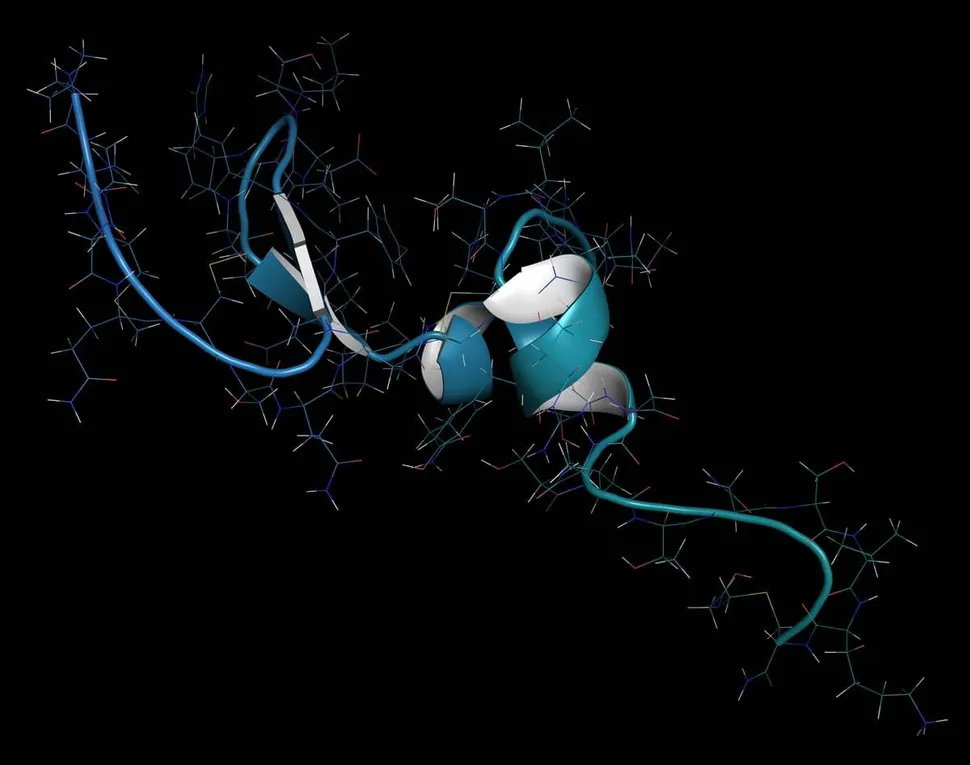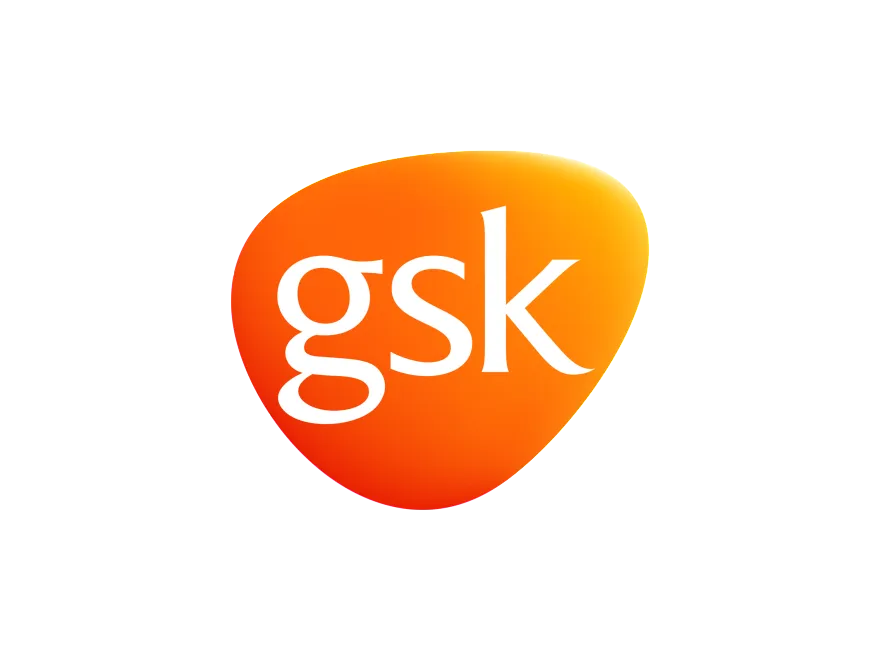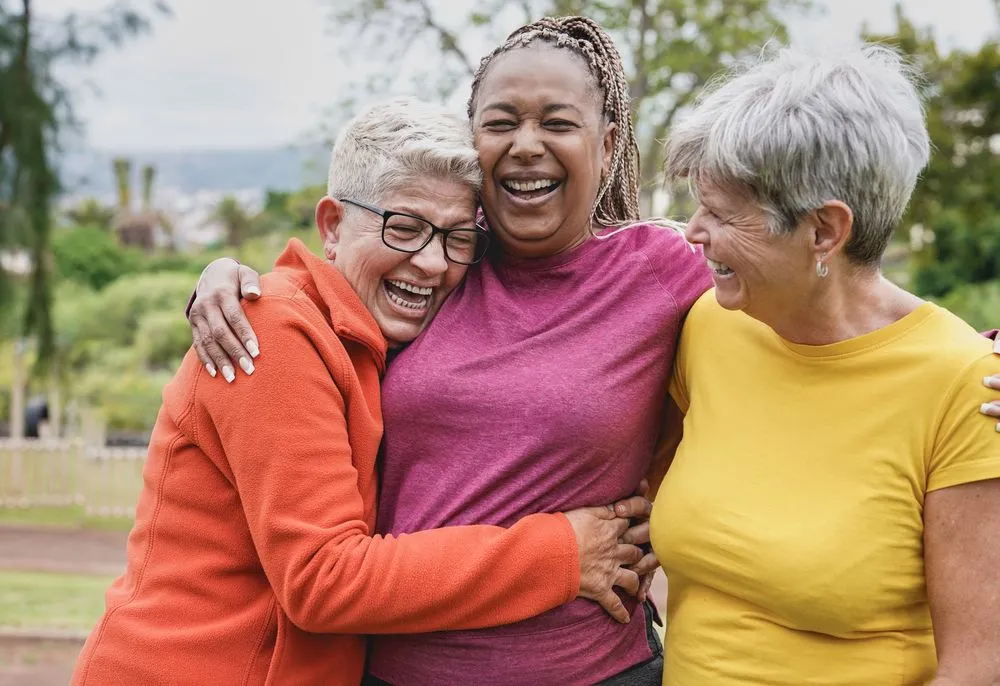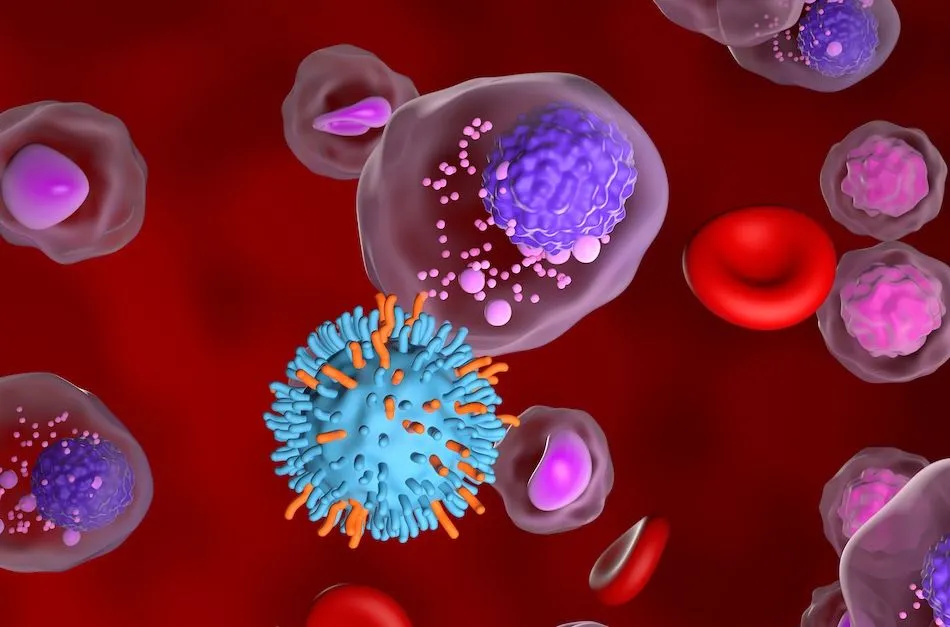MCRT Webcast: BCMA and Other Targets

B-cell maturation agent (BCMA), which is expressed on the surface of virtually all myeloma cells, has been called “the perfect target” by Dr. Nikhil Munshi, president of the International Myeloma Society. Additional therapies are being developed for novel targets in addition to BCMA include antibody drug conjugates (ADCs), CAR T, bispecific T-cell engagers (BiTEs or bispecifics), and new immunotherapies in research like trispecifics.
The ADC Blenrep ® was approved last year, the first CAR T product, ide-cel (bb2121), is expected to be approved in the next few days or weeks, and a number of bispecifics clinical trials are currently being conducted. Initial approval of these therapies will be focused on patients who relapse of refractory to multiple lines of treatment, but experts are increasingly optimistic that they will be used earlier with more experience.
This program is a deep dive into why these targets are important, how their mechanisms function, and how they are being integrated into myeloma therapy.
Drs. Alexander Lesokhin and Krina Patel explain why BCMA and other targets are essential in many novel therapeutic approaches in the Myeloma Crowd Round Table Interactive Webcast held on April 10, 2021:
Alexander Lesokhin, MD, Memorial Sloan Kettering Cancer Center, New York, NY: BCMA and Other Targets in Myeloma
- Advances in drug discovery have increased and improve myeloma survival
- Monoclonal antibodies (Mabs) are antibodies that are generated in laboratories
- Derived from natural antibodies that patients produce
- They can be engineered to identify any specific target
- The have two variable targets, called antigens, that are connected by an Fc region
- Naked antibodies “recruit” natural immune effector cells
- Antibodies can also be generated with a “payload” of a drug that is delivered to target, which are know as antibody drug conjugates (ADCs)
- The antigen provides the specificity to finding the target (like a UPS truck), that binds to cell and delivers the payload
- Multiple specificities in antigens can be engineered
- Bispecific engagers not only deliver payload, but recruit other cells, a T cell, for example, which are activated to provide greater probability of myeloma cell death
- It can use other targets, like CD3, to activate a signal to start action of drug
- A CAR T cell “fuses” the signaling activity to provide continuous activation
- What are the best targets?
- CD 38, targeted by daratumumab and isatuximab,
- SLAMF7, targeted by elotuzimab
- BCMA (B cell maturation agent), found on long-lived plasma cells
- GPRCSD and FCRH5 are newer targets being studied
- BCMA
- Found on chromosome 16
- Can be triggered by molecules called APRIL and BAFF
- Long lived plasma cells my also be rely on other targets, but BCMA is seemingly most attractive for myeloma therapy
- BCMA can be targeted therapeutically
- ADCs like belantamab mafodotin (BLENREP), which is FDA approved [learn more here]
- Studies of seven BCMA, T cell engaging bispecific antibodies were presented at the ASH 2020 meeting, highly encouraging results in small studies
- A number of CAR T research studies are focused on differing cell constructs to find most effective combination, target and engagers
- Ide cel (Abecma) CAR T was recently approved [learn more here]
- With larger numbers of BCMA therapies being studied and approved, the question of whether these therapies can be sequences is becoming more important
- Will also help understand mechanisms of resistance (loss of BCMA, low ratio of other targets)
- GPRC5D and FCRH5 are non-BCMA targets
- GPRC5D is highly expressed in most myeloma and not expressed anywhere else
- May be effective in combination with BCMA-targeted therapies
- FCRH5 is highly expressed on chromosome 1, which is associated with high-risk disease, not much expressed in other tissues
- May also be successful when combined with each other
Krina Patel, MD, MSc, MD Anderson Cancer Center, Houston, TX: BCMA and Treatment Strategies
- Treatment goals
- Achieve deep response
- Achieve long-term survival
- Preserve quality of live
- Delay disease progression and resistance (early treatment may make disease more resistant)
- Does timing matter to choose right treatment?
- Understanding disease progression
- Biochemical vs. clinical relapse, risk level matters with timing decisions
- Complementary therapies overview
- Combination therapies with different mechanisms of action are preferred
- Do older therapies impact newer ones is open question as well as how they can be combined
- Mechanism of action and toxicity profile of new therapies are still unclear, “we don’t want to cause extra issues”
- Biologics are relatively new in myeloma
- Overview of various factors that may determine how ide cel and other CAR T therapies more effective
- We will be learning a great deal in the next year about how they work
- Melflufen (PEPAXTO) was recently approved by FDA
Audience Questions & Answers
- 0:27 - Should we use immunotherapies earlier?
- 6:43 - Are bispecifics problematic for patients with renal (kidney) issues?
- 8:52 - When CAR T therapies are approved, can they only be administered to patients who fit the criteria of the clinical trials?
- 10:20 - Will patients with kidney issues have access to newly approved CAR T therapies?
- 12:33 - Can a patient do a stem cell transplant followed by a CAR T to extend remission? Could CAR T replace transplant? What is the strategy?
- 15:56 - What is the progression-free survival (PFS) for these CAR T or BiTEs trials?
- 18:00 - If patients are MRD-, do they longer survival in these trials?
- 19:28 - Is BCMA a “nuclear option”?
- 20:59 - Is one more prone to infection shortly after a CAR T procedure?
- 22:30 - If one fails a BCMA-targeted CAR T, is another BCMA-targeted therapy still an option?
- 25:14 - Are any trials being conducted for gain1q using FCRH5?
- 26:33 - Are you seeing any genetics-related patterns with these new therapies?
- 27:46 - Can genetic testing be done for extramedullary or non-secretory myeloma?
- 28:30 - Is there any movement to include non-secretory patients in clinical trials?
- 30:20 - Are there tests/standards which can better predict responses to different therapies?
- 32:58 - Could soluble BCMA testing become the standard measure of residual disease or replace bone marrow biopsies?
- 34:57 - Can biomarkers, like CD 19, be seen at earlier stages in myeloma stem cells?
- 36:10 - What are the latest findings for the BRAF or MEK inhibitors (point mutation targets) for the patients who might have those mutations?
- 39:00 - Does having had an allogeneic (allo) transplant have an impact on potentially trying CAR T?
- 40:48 - What do you see as the best possible strategy for maintaining response?
Questions Answered in Chat Forum
- I am non-secretory and get regular NGS/bone marrow testing. I just started BLENREP and would like to know how many weeks it would take to see if it is effective for me. Also why is dex not part of the regimen?
Dr. Patel answered: BLENREP can work relatively quickly (I've seen responses in some patients after the first cycle), but sometimes is can lead to stable disease first and then slowly improve outcomes. With non-secretory disease, I usually follow with imaging or bone marrow every 3-4 months.
- What can you tell us about Dr. James Berenson's BCMA analysis to follow myeloma response?
Dr. Patel answered: Finding a more sensitive and specific blood test (compared to light chains and M protein) to follow myeloma response (when in remission versus relapse) is very exciting. Circulating tumor DNA is also being evaluated for this. We don't know how this will be used to make clinical decisions though.
- If a BCMA treatment fails, and you respond to a different target like FcRH5, is there any information if another BCMA drug class, like ADCs, works later on?
Dr. Lesokhin answered: This is a great question! It’s logical to think that response can be achieved in this setting with a BCMA-ADC, especially if the plasma cells still express BCMA. We have anecdotal evidence to support doing this, but sequencing has not yet been formally studied.
- ADCs deliver toxic payloads into myeloma cells, while BiTEs engage powerful immune killers of myeloma cells. They sound like fool-proof ways to kill myeloma cells. So why are ORRs (overall response rates) not 100%?
Dr. Patel answered: With biologics that use your immune system as a mechanism of action to kill the myeloma, there are number of other factors (see Dr. Patel’s presentation) that are important. The response rates of 70-100% though in relapsed/refractory patients getting CAR T and bispecifics is unprecedented in myeloma so we're definitely going in the right direction.
- Does BCMA have any application in reducing elevated FLCs?
Dr. Lesokin answered: Yes, BCMA directed therapies can reduce elevated FLCs. It’s important though to consult with a specialist on what is the best therapy available at a specific time.
- Does measuring BCMA effectively measure activity of myeloma cells?
Dr. Patel answered: Not necessarily but we do know that most patients have higher levels of BCMA (soluble BCMA in the blood which is from BCMA that sheds off the myeloma) when they have relapsed/refractory disease, compared to when they are newly diagnosed or even in earlier precursor states like MGUS and smoldering myeloma. We think it increases with each progression for most patients, but that doesn't mean we can't target BCMA in earlier lines. Those trials are ongoing right now and will give us more valuable information.
- What does pre-treated patient mean? Can these include treatment of a patient with smoldering myeloma?
Dr. Lesokhin answered: Pre-treated means that patients have received initial treatment that is no longer working for them. New drugs are usually first evaluated in a setting when other available therapies have stopped working. If safe and effective in this relapsed setting then these medicines are studied earlier in disease natural history. In sum, additional studies are needed to explore if these drugs are safe and effective in patients with smoldering myeloma.
- Once a therapy is FDA approved, can you help me understand why it’s only available for the “heavily treated” population? Once someone has go through four regimens, aren’t they significantly weakened, making long term remissions less likely? What is the process to make these therapies available to patients sooner?
Dr. Patel answered: Great question. We have to prove that a new therapy is safe, first and most of all. Despite all the knowledge and technology we have to learn and predict if something will work to treat myeloma, not everything is safe and or efficacious. so all new treatments have to be treated in patients who are more relapsed and refractory who need it the most and risk benefit is different. Now trials are ongoing using these treatments earlier and hopefully they will quickly be approved earlier with these data.
- Does every relapse involve a translocation and/or deletion? Does every relapse call for another bone biopsy?
Dr. Lesokhin answered: Not all relapses result from a translocation or deletion. Relapse is probably a complex interplay of genetic events like mutations, translocations or deletions and also possibly other changes in microenvironment.
Thanks to our Round Table sponsors
 .
.  .
.  .
. 
 .
.  .
. 


B-cell maturation agent (BCMA), which is expressed on the surface of virtually all myeloma cells, has been called “the perfect target” by Dr. Nikhil Munshi, president of the International Myeloma Society. Additional therapies are being developed for novel targets in addition to BCMA include antibody drug conjugates (ADCs), CAR T, bispecific T-cell engagers (BiTEs or bispecifics), and new immunotherapies in research like trispecifics.
The ADC Blenrep ® was approved last year, the first CAR T product, ide-cel (bb2121), is expected to be approved in the next few days or weeks, and a number of bispecifics clinical trials are currently being conducted. Initial approval of these therapies will be focused on patients who relapse of refractory to multiple lines of treatment, but experts are increasingly optimistic that they will be used earlier with more experience.
This program is a deep dive into why these targets are important, how their mechanisms function, and how they are being integrated into myeloma therapy.
Drs. Alexander Lesokhin and Krina Patel explain why BCMA and other targets are essential in many novel therapeutic approaches in the Myeloma Crowd Round Table Interactive Webcast held on April 10, 2021:
Alexander Lesokhin, MD, Memorial Sloan Kettering Cancer Center, New York, NY: BCMA and Other Targets in Myeloma
- Advances in drug discovery have increased and improve myeloma survival
- Monoclonal antibodies (Mabs) are antibodies that are generated in laboratories
- Derived from natural antibodies that patients produce
- They can be engineered to identify any specific target
- The have two variable targets, called antigens, that are connected by an Fc region
- Naked antibodies “recruit” natural immune effector cells
- Antibodies can also be generated with a “payload” of a drug that is delivered to target, which are know as antibody drug conjugates (ADCs)
- The antigen provides the specificity to finding the target (like a UPS truck), that binds to cell and delivers the payload
- Multiple specificities in antigens can be engineered
- Bispecific engagers not only deliver payload, but recruit other cells, a T cell, for example, which are activated to provide greater probability of myeloma cell death
- It can use other targets, like CD3, to activate a signal to start action of drug
- A CAR T cell “fuses” the signaling activity to provide continuous activation
- What are the best targets?
- CD 38, targeted by daratumumab and isatuximab,
- SLAMF7, targeted by elotuzimab
- BCMA (B cell maturation agent), found on long-lived plasma cells
- GPRCSD and FCRH5 are newer targets being studied
- BCMA
- Found on chromosome 16
- Can be triggered by molecules called APRIL and BAFF
- Long lived plasma cells my also be rely on other targets, but BCMA is seemingly most attractive for myeloma therapy
- BCMA can be targeted therapeutically
- ADCs like belantamab mafodotin (BLENREP), which is FDA approved [learn more here]
- Studies of seven BCMA, T cell engaging bispecific antibodies were presented at the ASH 2020 meeting, highly encouraging results in small studies
- A number of CAR T research studies are focused on differing cell constructs to find most effective combination, target and engagers
- Ide cel (Abecma) CAR T was recently approved [learn more here]
- With larger numbers of BCMA therapies being studied and approved, the question of whether these therapies can be sequences is becoming more important
- Will also help understand mechanisms of resistance (loss of BCMA, low ratio of other targets)
- GPRC5D and FCRH5 are non-BCMA targets
- GPRC5D is highly expressed in most myeloma and not expressed anywhere else
- May be effective in combination with BCMA-targeted therapies
- FCRH5 is highly expressed on chromosome 1, which is associated with high-risk disease, not much expressed in other tissues
- May also be successful when combined with each other
Krina Patel, MD, MSc, MD Anderson Cancer Center, Houston, TX: BCMA and Treatment Strategies
- Treatment goals
- Achieve deep response
- Achieve long-term survival
- Preserve quality of live
- Delay disease progression and resistance (early treatment may make disease more resistant)
- Does timing matter to choose right treatment?
- Understanding disease progression
- Biochemical vs. clinical relapse, risk level matters with timing decisions
- Complementary therapies overview
- Combination therapies with different mechanisms of action are preferred
- Do older therapies impact newer ones is open question as well as how they can be combined
- Mechanism of action and toxicity profile of new therapies are still unclear, “we don’t want to cause extra issues”
- Biologics are relatively new in myeloma
- Overview of various factors that may determine how ide cel and other CAR T therapies more effective
- We will be learning a great deal in the next year about how they work
- Melflufen (PEPAXTO) was recently approved by FDA
Audience Questions & Answers
- 0:27 - Should we use immunotherapies earlier?
- 6:43 - Are bispecifics problematic for patients with renal (kidney) issues?
- 8:52 - When CAR T therapies are approved, can they only be administered to patients who fit the criteria of the clinical trials?
- 10:20 - Will patients with kidney issues have access to newly approved CAR T therapies?
- 12:33 - Can a patient do a stem cell transplant followed by a CAR T to extend remission? Could CAR T replace transplant? What is the strategy?
- 15:56 - What is the progression-free survival (PFS) for these CAR T or BiTEs trials?
- 18:00 - If patients are MRD-, do they longer survival in these trials?
- 19:28 - Is BCMA a “nuclear option”?
- 20:59 - Is one more prone to infection shortly after a CAR T procedure?
- 22:30 - If one fails a BCMA-targeted CAR T, is another BCMA-targeted therapy still an option?
- 25:14 - Are any trials being conducted for gain1q using FCRH5?
- 26:33 - Are you seeing any genetics-related patterns with these new therapies?
- 27:46 - Can genetic testing be done for extramedullary or non-secretory myeloma?
- 28:30 - Is there any movement to include non-secretory patients in clinical trials?
- 30:20 - Are there tests/standards which can better predict responses to different therapies?
- 32:58 - Could soluble BCMA testing become the standard measure of residual disease or replace bone marrow biopsies?
- 34:57 - Can biomarkers, like CD 19, be seen at earlier stages in myeloma stem cells?
- 36:10 - What are the latest findings for the BRAF or MEK inhibitors (point mutation targets) for the patients who might have those mutations?
- 39:00 - Does having had an allogeneic (allo) transplant have an impact on potentially trying CAR T?
- 40:48 - What do you see as the best possible strategy for maintaining response?
Questions Answered in Chat Forum
- I am non-secretory and get regular NGS/bone marrow testing. I just started BLENREP and would like to know how many weeks it would take to see if it is effective for me. Also why is dex not part of the regimen?
Dr. Patel answered: BLENREP can work relatively quickly (I've seen responses in some patients after the first cycle), but sometimes is can lead to stable disease first and then slowly improve outcomes. With non-secretory disease, I usually follow with imaging or bone marrow every 3-4 months.
- What can you tell us about Dr. James Berenson's BCMA analysis to follow myeloma response?
Dr. Patel answered: Finding a more sensitive and specific blood test (compared to light chains and M protein) to follow myeloma response (when in remission versus relapse) is very exciting. Circulating tumor DNA is also being evaluated for this. We don't know how this will be used to make clinical decisions though.
- If a BCMA treatment fails, and you respond to a different target like FcRH5, is there any information if another BCMA drug class, like ADCs, works later on?
Dr. Lesokhin answered: This is a great question! It’s logical to think that response can be achieved in this setting with a BCMA-ADC, especially if the plasma cells still express BCMA. We have anecdotal evidence to support doing this, but sequencing has not yet been formally studied.
- ADCs deliver toxic payloads into myeloma cells, while BiTEs engage powerful immune killers of myeloma cells. They sound like fool-proof ways to kill myeloma cells. So why are ORRs (overall response rates) not 100%?
Dr. Patel answered: With biologics that use your immune system as a mechanism of action to kill the myeloma, there are number of other factors (see Dr. Patel’s presentation) that are important. The response rates of 70-100% though in relapsed/refractory patients getting CAR T and bispecifics is unprecedented in myeloma so we're definitely going in the right direction.
- Does BCMA have any application in reducing elevated FLCs?
Dr. Lesokin answered: Yes, BCMA directed therapies can reduce elevated FLCs. It’s important though to consult with a specialist on what is the best therapy available at a specific time.
- Does measuring BCMA effectively measure activity of myeloma cells?
Dr. Patel answered: Not necessarily but we do know that most patients have higher levels of BCMA (soluble BCMA in the blood which is from BCMA that sheds off the myeloma) when they have relapsed/refractory disease, compared to when they are newly diagnosed or even in earlier precursor states like MGUS and smoldering myeloma. We think it increases with each progression for most patients, but that doesn't mean we can't target BCMA in earlier lines. Those trials are ongoing right now and will give us more valuable information.
- What does pre-treated patient mean? Can these include treatment of a patient with smoldering myeloma?
Dr. Lesokhin answered: Pre-treated means that patients have received initial treatment that is no longer working for them. New drugs are usually first evaluated in a setting when other available therapies have stopped working. If safe and effective in this relapsed setting then these medicines are studied earlier in disease natural history. In sum, additional studies are needed to explore if these drugs are safe and effective in patients with smoldering myeloma.
- Once a therapy is FDA approved, can you help me understand why it’s only available for the “heavily treated” population? Once someone has go through four regimens, aren’t they significantly weakened, making long term remissions less likely? What is the process to make these therapies available to patients sooner?
Dr. Patel answered: Great question. We have to prove that a new therapy is safe, first and most of all. Despite all the knowledge and technology we have to learn and predict if something will work to treat myeloma, not everything is safe and or efficacious. so all new treatments have to be treated in patients who are more relapsed and refractory who need it the most and risk benefit is different. Now trials are ongoing using these treatments earlier and hopefully they will quickly be approved earlier with these data.
- Does every relapse involve a translocation and/or deletion? Does every relapse call for another bone biopsy?
Dr. Lesokhin answered: Not all relapses result from a translocation or deletion. Relapse is probably a complex interplay of genetic events like mutations, translocations or deletions and also possibly other changes in microenvironment.
Thanks to our Round Table sponsors
 .
.  .
.  .
. 
 .
.  .
. 



about the author
Greg Brozeit
Greg Brozeit has been with the HealthTree Foundation since 2015 when he began volunteering for the Myeloma Crowd. Prior to that he worked with Dr. Bart Barlogie and the International Myeloma Foundation, inaugurating many myeloma patient advocacy and education programs.
More on HealthTree Programs
Trending Articles
Upcoming Events




Get the Latest Multiple Myeloma Updates, Delivered to You.
By subscribing to the HealthTree newsletter, you'll receive the latest research, treatment updates, and expert insights to help you navigate your health.
Together we care.
Together we cure.
3x Faster.













